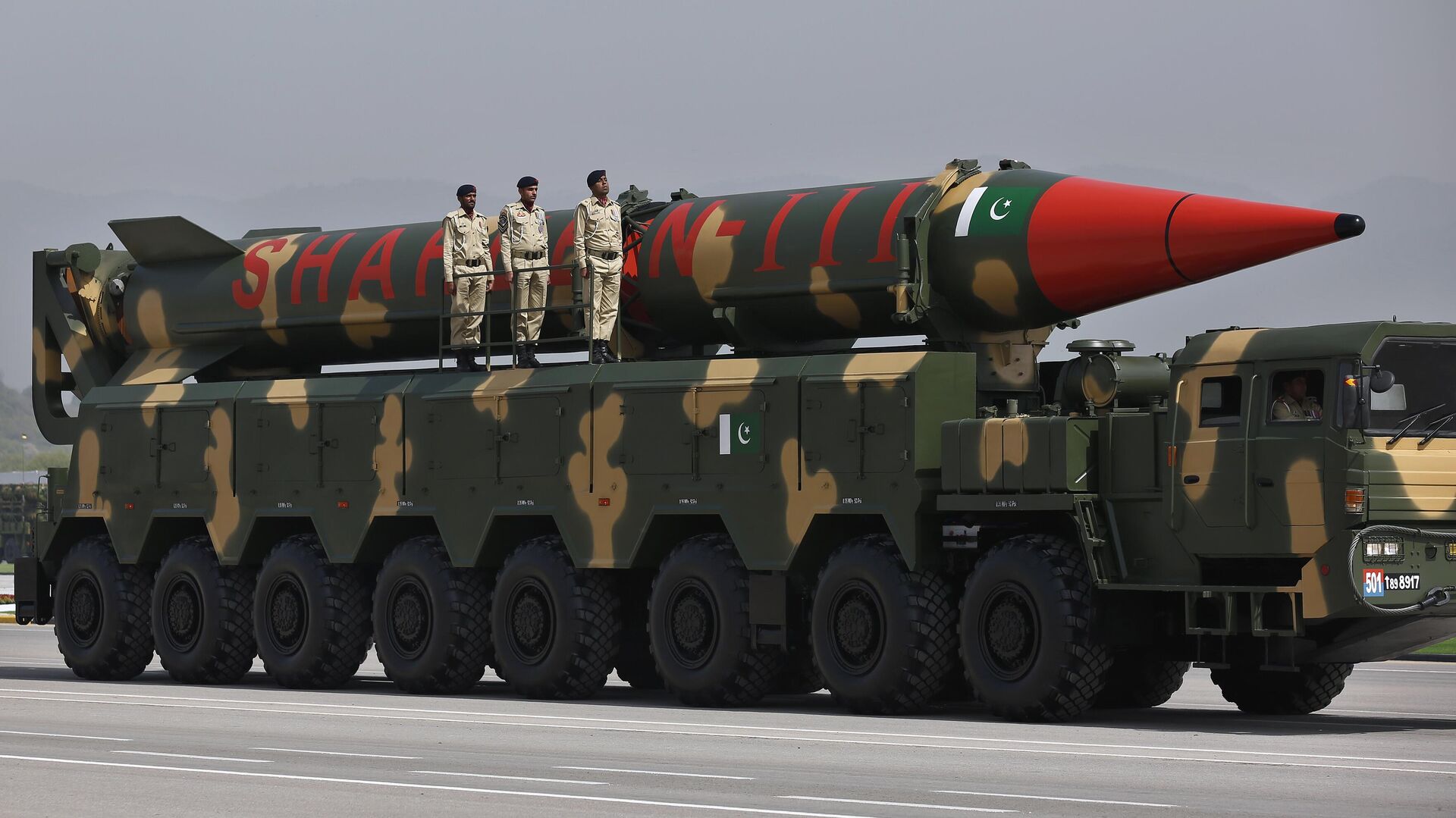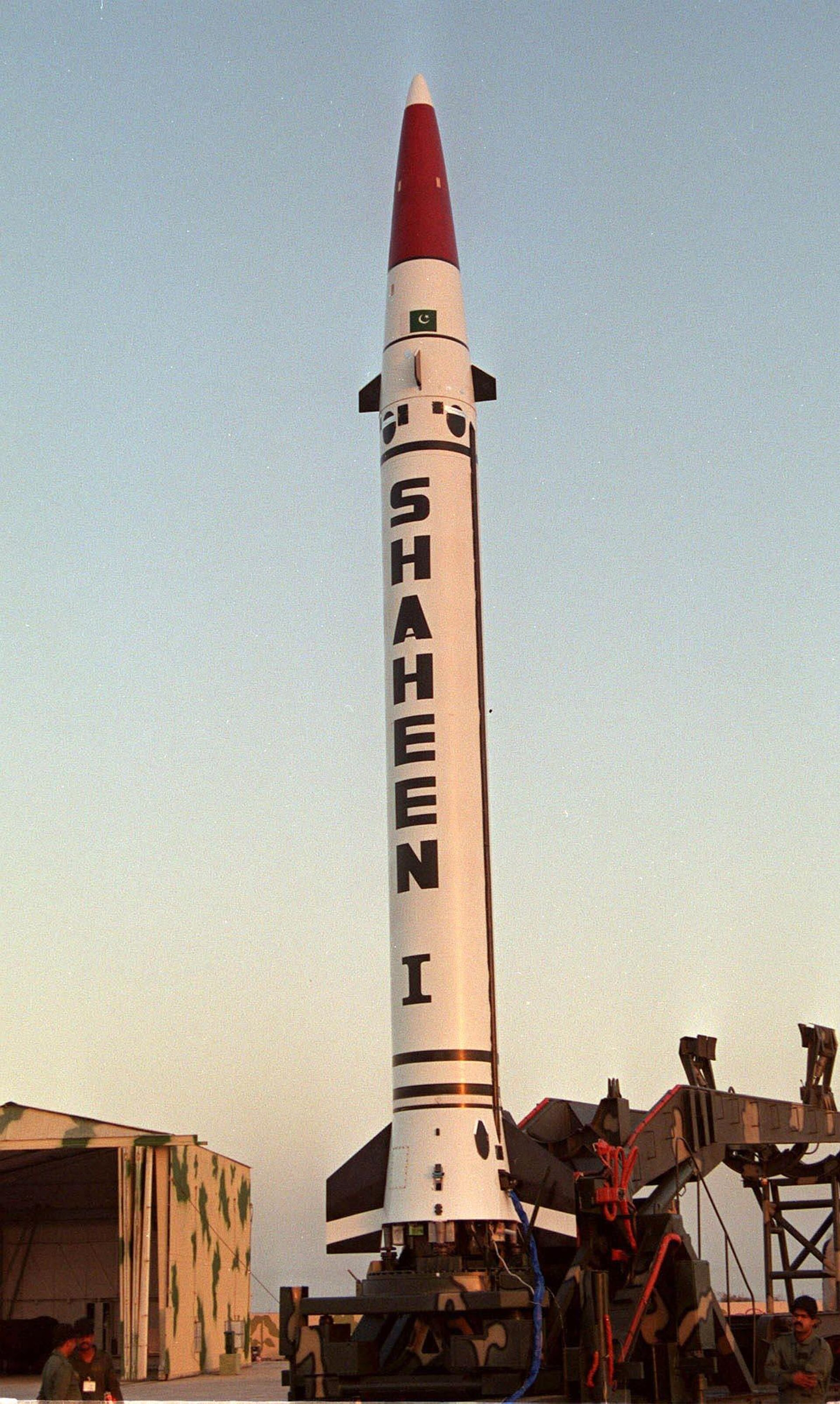https://sputniknews.in/20221219/when-did-pakistan-get-nuclear-weapons-35689.html
When Did Pakistan Get Nuclear Weapons?
When Did Pakistan Get Nuclear Weapons?
Sputnik India
When did Pakistan get its first nuclear bomb, and why did Islamabad feel the need to risk international condemnation to obtain and test such a fearsome weapon?
2022-12-19T20:51+0530
2022-12-19T20:51+0530
2022-12-19T20:52+0530
pakistan
pakistan army
nuclear weapons
https://cdn1.img.sputniknews.in/img/07e6/0c/10/127208_0:34:3523:2015_1920x0_80_0_0_26b4575beacb6dcd4b5c334d360e9a92.jpg
The simple answer is: because of decades of poor relations with its larger and more powerful neighbor.When Did Pakistan Become a Member of the Nuclear Club?On 28 May 1998, Pakistan became the seventh nation in the world to test nuclear weapons. The test, named Operation Chagai-I, saw the simultaneous detonation of five underground nuclear explosives in a mountainous, unpopulated part of Balochistan province in western Pakistan. The blasts yielded a TNT equivalent of up to 40 kilotons – well over double that of Little Boy, the American nuclear bomb dropped on Hiroshima, Japan in 1945. The American bomb and its 15 kiloton yield was enough to devastate the Japanese city, and kill up to 146,000 people.Islamabad followed up the Chagai-I test two days later with Chagai-II, also conducted in Balochistan, this time in a desert area, causing an explosion with a yield of 25 kilotons of TNT. Unlike the first test, which used weapons-grade uranium, the second used weapons-grade plutonium, thereby indicating that Pakistan had mastered both nuclear weapons technologies.The May 1998 tests were Pakistan’s first and only nuclear weapons tests to date, and were the culmination of a decades-long process which began in 1972, when Islamabad began its nuclear program, in strict secrecy, two years after the Non-Proliferation Treaty entered into force. However, Pakistan is believed to have acquired nuclear weapons more than a decade before Chagai-I and Chagai-II about which more appears below.Why Did Pakistan Want to Acquire Nukes?Pakistan began its nuclear weapons program just one year after the humiliating loss of East Pakistan in the 1971 Bangladesh Liberation War, which was accompanied by Indian military intervention, and was one of three wars Pakistan fought and lost with its colossus of a neighbor up to that point since independence in 1947.Pakistani officials, media and nuclear experts have stated repeatedly that the 1998 tests were designed to “restore the strategic balance” on the Indian subcontinent. The tests were carried out just weeks after India conducted three nuclear tests of its own between 11 and 13 May 1998. Those trials, carried out underground and involving both fusion and fission-based bombs, constituted India’s second series of nuclear explosions since Operation Smiling Buddha, the so-called “peaceful nuclear explosion” conducted by Delhi in May 1974.Although it didn’t conduct its first nuclear test until 1998, Pakistan is thought to have gained the technical capability to build and detonate a nuclear device using highly enriched uranium as early as 1983 or 1984, and, according to CIA estimates, had built between seven and 12 nuclear devices by 1990.A Little Help From Our Friends: Who Helped Pakistan Get the Bomb?Like their Indian counterparts, Pakistan was able to rely on local scientists, such as Dr Abdul Qadeer Khan, the celebrated "father" of Pakistan’s nuclear bomb, to do much of the heavy lifting in turning Islamabad into a nuclear power. However, unlike India, the particulars of Pakistan’s geopolitical position during the Cold War provided Islamabad with a large number of friends helping the country in its quest for a bomb.The Pakistani nuclear program is alleged to have received hundreds of millions of dollars in generous donations from fellow Muslim nations, including, allegedly, Saudi Arabia and Libya.Indian officials and academics have also claimed that China provided Pakistan with crucial technologies needed to build a nuclear device, up to and including highly enriched uranium, and support with the production of a plutonium production reactor at Khushab, north-central Pakistan. Chinese officials have vigorously denied these allegations.In the late Nineties, US officials revealed that Washington deliberately overlooked Islamabad’s pursuit of nukes, and that the Reagan administration provided Pakistani leaders with America’s “blessings” to build the bomb amid its obsession with kicking the Soviets out of Afghanistan. Throughout the mid to late Eighties and the Nineties, successive administrations falsely assured Congress that Pakistan did not have access to nuclear weapons technology.What Kinds of Nuclear Delivery Systems Does Pakistan Have?The Stockholm International Peace Research Institute estimates that Pakistan’s nuclear deterrent consists of 165 nuclear warheads, five more than its Indian neighbors, who have 160.The Federation of American Scientists assumes that Pakistan’s nuclear weapons are deliverable by aircraft, including the nation’s fleet of American-made F-16, French Mirage III/5 and Chinese-built A-5 jets.Pakistan also has an array of battlefield/tactical, short range, and medium-range ballistic missiles, including the Hatf-I, which has a range of up to 100km, the Ghaznavi, which has a range of 320km, the Shaheen program, which have ranges between 750 and 1,000km, and the Ghauri, Ababeel and Shaheen-II, which have ranges of between 1,500 and 2,750km. The Pakistani military also has access to an array of cruise missiles, including the Babur 1, 1A, 1B and 2 series, which are also nuclear capable, and have a range of up to 900km.*under UN sanctions for terrorist activities.
pakistan
Sputnik India
feedback.hindi@sputniknews.com
+74956456601
MIA „Rossiya Segodnya“
2022
News
en_IN
Sputnik India
feedback.hindi@sputniknews.com
+74956456601
MIA „Rossiya Segodnya“
Sputnik India
feedback.hindi@sputniknews.com
+74956456601
MIA „Rossiya Segodnya“
pakistan nuclear weapons, how many nuclear weapons pakistan has, how many nuclear bombs pakistan has, pakistan nuclear bomb, operation chagai-1, non-proliferation treaty, npt treaty, is pakistan part of npt, chagai-1 nuclear test, pakistan nuclear test
pakistan nuclear weapons, how many nuclear weapons pakistan has, how many nuclear bombs pakistan has, pakistan nuclear bomb, operation chagai-1, non-proliferation treaty, npt treaty, is pakistan part of npt, chagai-1 nuclear test, pakistan nuclear test
When Did Pakistan Get Nuclear Weapons?
20:51 19.12.2022 (Updated: 20:52 19.12.2022) When did Pakistan get its first nuclear bomb, and why did Islamabad feel the need to risk international condemnation to obtain and test such a fearsome weapon?
The simple answer is: because of decades of poor relations with its larger and more powerful neighbor.
When Did Pakistan Become a Member of the Nuclear Club?
On 28 May 1998, Pakistan became the seventh nation in the world to test nuclear weapons. The test, named Operation Chagai-I, saw the simultaneous detonation of five underground nuclear explosives in a mountainous, unpopulated part of Balochistan province in western Pakistan. The blasts yielded a TNT equivalent of up to 40 kilotons – well over double that of Little Boy, the American nuclear bomb dropped on Hiroshima, Japan in 1945. The American bomb and its 15 kiloton yield was enough to devastate the Japanese city, and kill up to 146,000 people.
Islamabad followed up the Chagai-I test two days later with Chagai-II, also conducted in Balochistan, this time in a desert area,
causing an explosion with a yield of 25 kilotons of TNT. Unlike the first test, which used weapons-grade uranium, the second used weapons-grade plutonium, thereby indicating that Pakistan had mastered both nuclear weapons technologies.
The May 1998 tests were Pakistan’s first and only nuclear weapons tests to date, and were the culmination of a decades-long process which began in 1972, when Islamabad began its nuclear program, in strict secrecy, two years after the Non-Proliferation Treaty entered into force. However, Pakistan is believed to have acquired nuclear weapons more than a decade before Chagai-I and Chagai-II about which more appears below.
Why Did Pakistan Want to Acquire Nukes?
Pakistan began its nuclear weapons program just one year after the humiliating loss of East Pakistan in the 1971 Bangladesh Liberation War, which was accompanied by Indian military intervention, and was one of three wars Pakistan fought and lost with its colossus of a neighbor up to that point since independence in 1947.
Pakistani officials, media and nuclear experts have stated repeatedly that the 1998 tests were designed to “restore the strategic balance” on the Indian subcontinent. The tests were carried out just weeks after India conducted three nuclear tests of its own between 11 and 13 May 1998. Those trials, carried out underground and involving both fusion and fission-based bombs, constituted India’s second series of nuclear explosions since Operation Smiling Buddha, the so-called “peaceful nuclear explosion” conducted by Delhi in May 1974.
Prime Minister Zulfikar Ali Bhutto, architect of Pakistan’s nuclear program, characterized the 1974 Indian test as an attempt at “nuclear blackmail” and ordered his country’s scientists to accelerate work on a Pakistani nuclear bomb. Pakistan's officials warned publically that the Indian test would force Islamabad to create its own nuclear bomb, even though development was already well underway by the time of the Indian test.
Although it didn’t conduct its first nuclear test until 1998, Pakistan is thought to have gained the technical capability to build and detonate a nuclear device using highly enriched uranium as early as 1983 or 1984, and,
according to CIA estimates, had built between seven and 12 nuclear devices by 1990.
A Little Help From Our Friends: Who Helped Pakistan Get the Bomb?
Like their Indian counterparts, Pakistan was able to rely on local scientists, such as Dr Abdul Qadeer Khan, the celebrated "father" of Pakistan’s nuclear bomb, to do much of the heavy lifting in turning Islamabad into a nuclear power. However, unlike India, the particulars of Pakistan’s geopolitical position during the Cold War provided Islamabad with a large number of friends helping the country in its quest for a bomb.
The Pakistani nuclear program is alleged to have received
hundreds of millions of dollars in generous donations from fellow Muslim nations, including, allegedly, Saudi Arabia and Libya.
Indian officials and academics
have also claimed that China provided Pakistan with crucial technologies needed to build a nuclear device, up to and including highly enriched uranium, and support with the production of a plutonium production reactor at Khushab, north-central Pakistan. Chinese officials have
vigorously denied these allegations.
In the late Nineties, US officials revealed that Washington deliberately overlooked Islamabad’s pursuit of nukes, and that the Reagan administration provided Pakistani leaders with America’s
“blessings” to build the bomb amid its
obsession with kicking the Soviets out of Afghanistan. Throughout the mid to late Eighties and the Nineties, successive administrations falsely assured Congress that Pakistan did not have access to nuclear weapons technology.
Some US officials have since expressed regret over US assistance to Pakistan on the nuclear issue. Last year, after Washington’s humiliating pull-out from Afghanistan, hawkish former Trump national security advisor John Bolton blasted Pakistan as a “two-faced” ally over the Pakistani government’s alleged support for the Taliban*, and called on the US to take “preventative action... if a future terrorist regime in Islamabad, or even today’s government or like-minded successors” appeared “ready to transfer nuclear capabilities to terrorists”.
What Kinds of Nuclear Delivery Systems Does Pakistan Have?
The Stockholm International Peace Research Institute estimates that Pakistan’s nuclear deterrent consists of 165 nuclear warheads,
five more than its Indian neighbors, who have 160.
The Federation of American Scientists
assumes that Pakistan’s nuclear weapons are deliverable by aircraft, including the nation’s fleet of American-made F-16, French Mirage III/5 and Chinese-built A-5 jets.
Pakistan also has an array of battlefield/tactical, short range, and medium-range ballistic missiles, including the Hatf-I, which has a range of up to 100km, the Ghaznavi, which has a range of 320km, the Shaheen program, which have ranges between 750 and 1,000km, and the Ghauri, Ababeel and Shaheen-II, which have ranges of between 1,500 and 2,750km. The Pakistani military also has access to an array of cruise missiles, including the Babur 1, 1A, 1B and 2 series, which are also nuclear capable, and have a range of up to 900km.
*under UN sanctions for terrorist activities.


